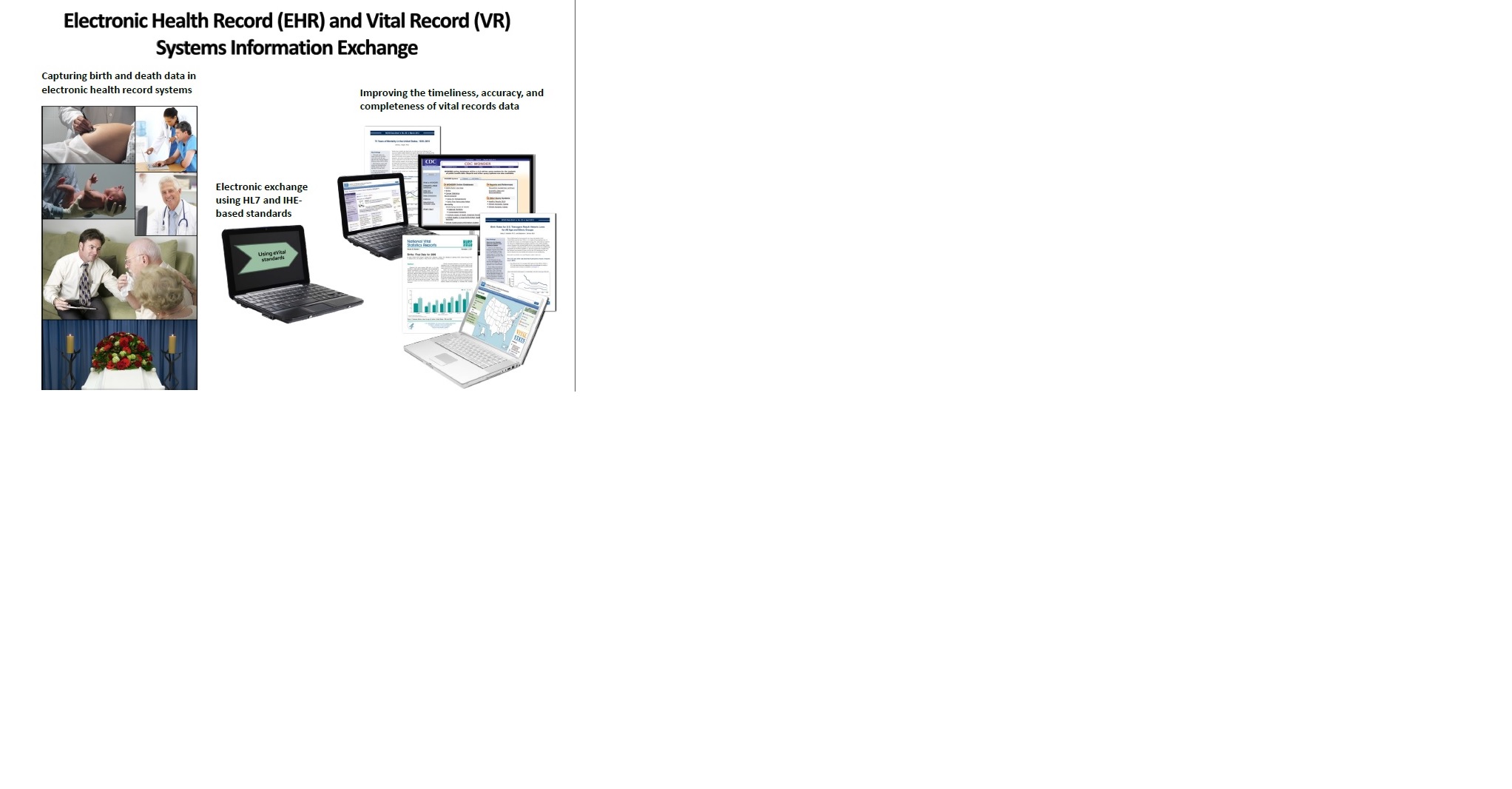Birth and Fetal Death Reporting Enhanced Profile
The Birth and Fetal Death Reporting Extended (BFDR-E) content profile supports pre-population of data from electronic health record systems to electronic vital records systems for birth, fetal death and death reporting to meet Federal, state and local reporting requirements.
Summary
The National Vital Statistics System has a long and enduring history that serves to provide essential data on births and deaths within the United States and is the oldest and most successful example of inter-governmental data sharing in Public Health. Currently, these data typically are gathered by hospital personnel from the hospital’s medical records using paper worksheets. The process of capturing Vital Records information manually is duplicative, labor-intensive, costly and can be error prone. As a result, the timeliness and quality of these data are adversely affected.
The IHE Birth and Fetal Death Reporting Extended (BFDR-E) profile defines the mechanism to capture the information required for reporting to vital records. The BFDR-E profile provides the mapping and data capture rules to collect information from the IHE PCC Labor and Delivery Summary using the forms data capture. However, once this information is captured, there is no standard content document or transactional message specified by the BFDR profile to communicate this information to a Vital Records system. This results in limitations in deployment approaches. The recipient of the data must process the custom form data. The Vital Records systems may benefit from the HL7 V2.5.1 Birth and Fetal Death Reporting transaction specification and the HL7 CDA Birth and Fetal Death Reporting document specification to standardize the data they receive.
Benefits
<If the profile can improve Cost, Safety, Quality or Efficiency then list the specific examples of that benefit (e.g. error reduction, increased throughput) and how they come about (e.g. SWF reduces patient errors due to mistyped demographics at the modality by transfering demographics electronically from the Order Filler). Consider using a bullet list for readability. Such benefits help users and vendors make the business case for the profile. If the profile does not improve any aspect of Cost, Safety, Quality or Efficiency feel free to talk about something else here.>
Details
The Birth and Fetal Death Reporting-Enhanced (BFDR-E) Profile provides a means to capture and communicate information needed to report births and fetal deaths for vital registration purposes. BFDR-E builds upon the earlier Birth and Fetal Death Reporting (BFDR) Profile that utilized actors and transactions defined in the ITI Retrieve Form for Data Capture (RFD) Profile to capture structured data using digital forms. BFDR-E further defines a mechanism to transform form submission data and record it in a CDA document designed to exchange the information in a standard format. BFDR-E also defines a mechanism to transform form submission data and transmit it as a standard HL7 v2 message.
Systems Affected
<List (in user terms) the types of systems they might expect to have implemented actors from this profile, e.g. RIS, PACS, HIS, CAD Workstation, etc. and for each, how it would participate.>
- PACS systems may store, manage, and/or display Evidence Documents.
- Display systems may query, retrieve and display Evidence Documents.
- Reporting workstations may retrieve, process and include details from Evidence Documents in reports
Actors & Transactions:
<Insert an actor-transaction diagram, and or list of Content Definitions>
Specification
Profile Status: Final Text <Replace "Final Text" with "Trial Implementation" or "Public Comment" as appropriate.>
Documents:
<Provide direct links to the specific volumes or supplements, and list the volume sections relevant to this profile. This is a simple inventory of official normative and informative text. If you would like to provide a reading guide or walkthrough of what is in each of the different sections for implementers or users, do that in the Profile FAQ or the Profile Implementation Page linked below. If the profile uses transactions from multiple Tech. Frameworks, repeat the structure below.>
IHE Radiology Technical Framework:
Underlying Standards:
<list all the standards on which the profile is based; if possible with links to sources>
See Also
1. HL7 and other standards documents referenced in Volume 1 and Volume 2
2. Birth Edit Specifications for the 2003 Revision of the U.S. Standard Certificate of Live Birth (4/2004; 3/2005; Updated 7/2012)
3. Natality 2003 Revision – File In-Processing Documentation (14 Dec 2010)
4. Fetal Death Edit Specifications for the 2003 Revision of the U.S. Standard Report of Fetal Death Vital Records birth certificates and fetal death reports include important demographic, medical and key information about the antepartum period, the labor and delivery process and the newborn/fetal death . Much of the medical and health information collected for the birth certificate and fetal death report can be pre-populated with information already available in the Electronic Health Record (EHR). A responsible Health Care Provider (HCP) or designated representative must review and complete the information to ensure data quality for vital registration purposes. These data may then be used by public health agencies to track maternal and infant health to target interventions for at risk populations.
